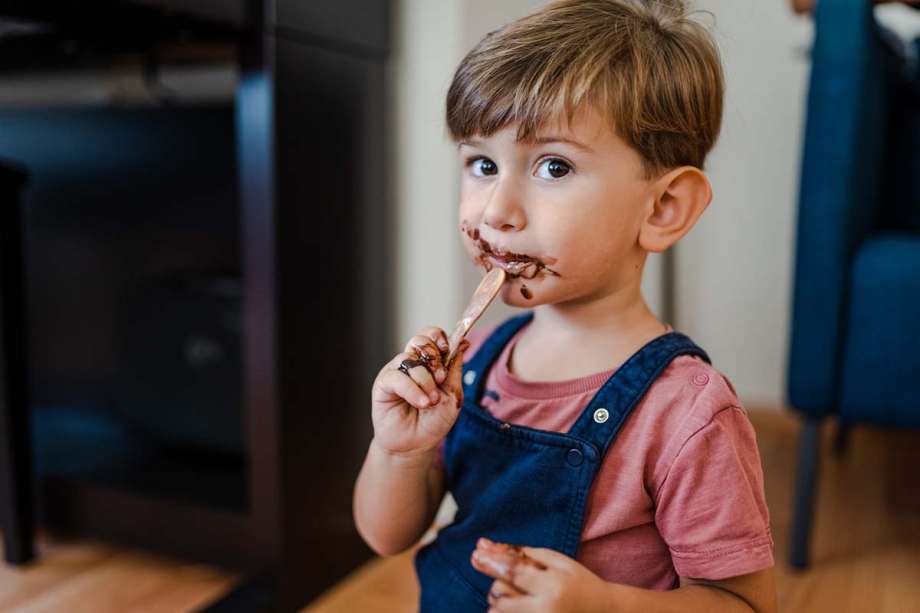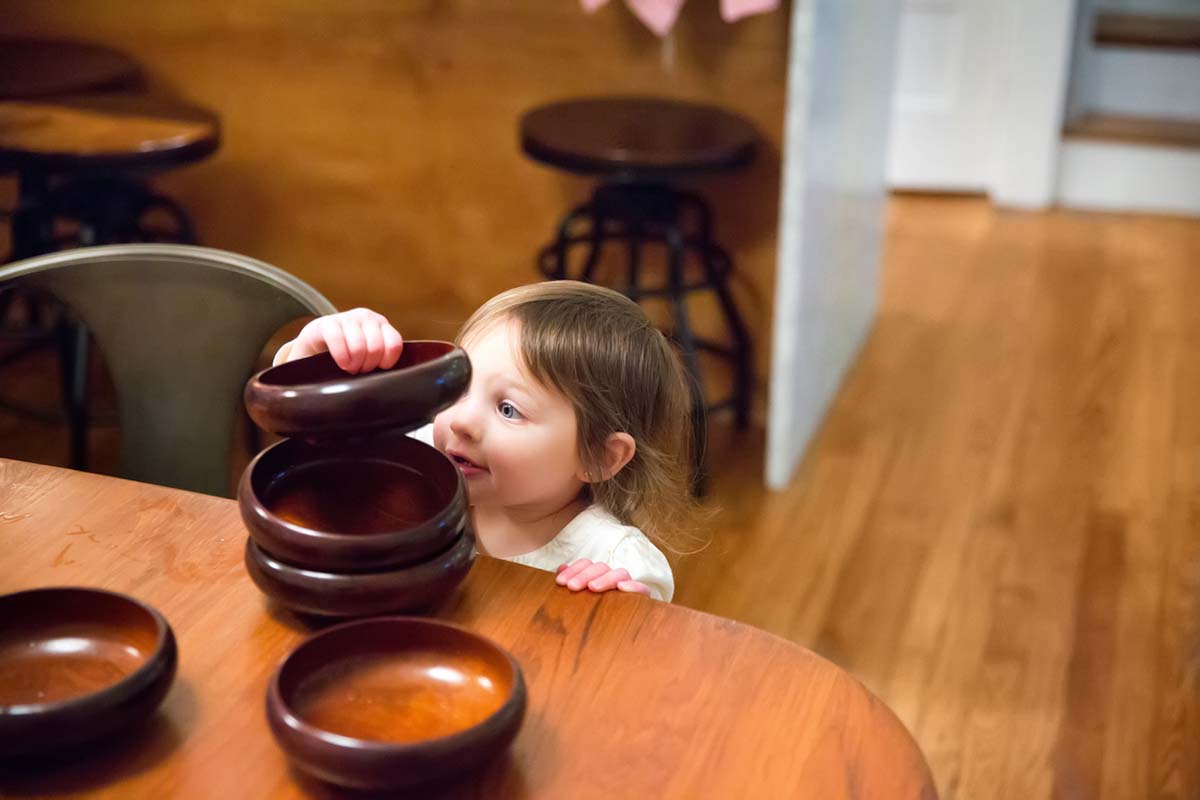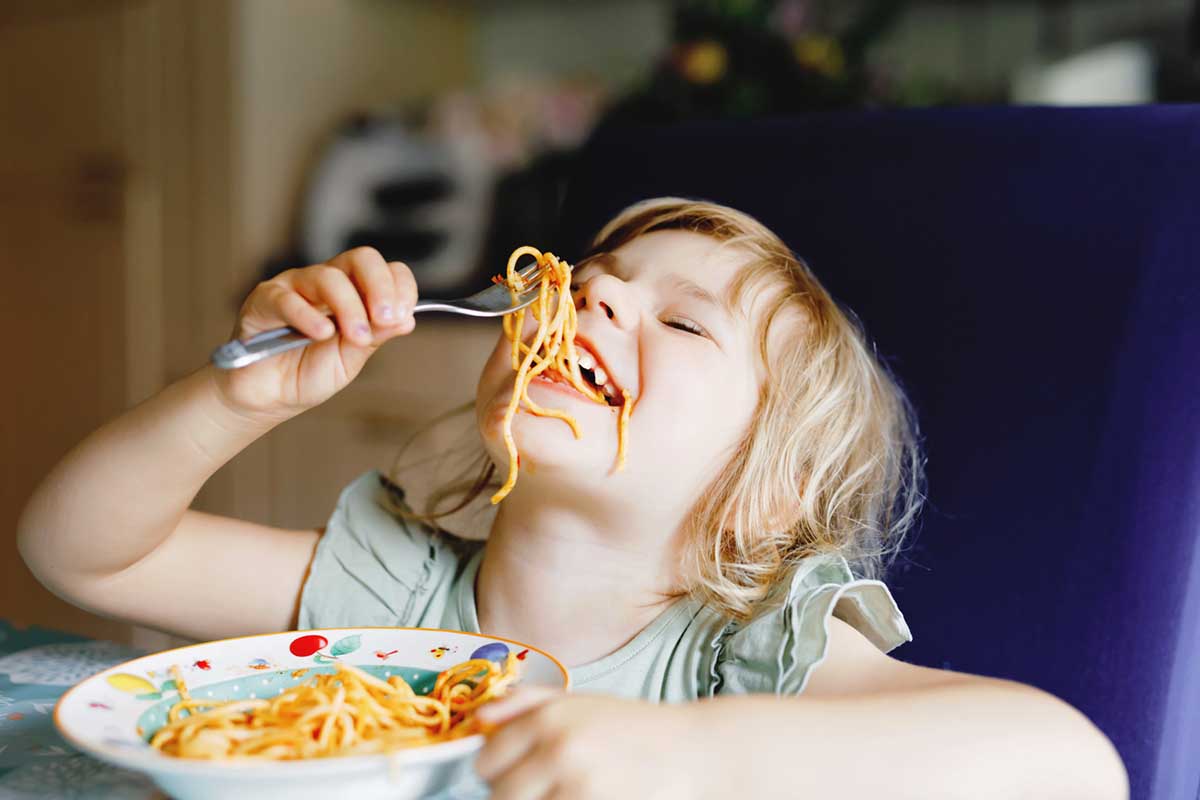A Guide to Manners and Mealtime for You and Your Toddler

It’s stressful for any parent when their toddler is crying, throwing a tantrum, or playing messily with their food in a public setting. But it’s important to remember that children are messy, and that’s okay. It doesn’t make you a bad parent if your toddler is struggling with their table manners. But there are fun ways that you can help your child learn about appropriate table manners at home, and this can help set your child up to feel confident and at ease during many different types of meals, from formal dinners to casual holiday gatherings.
Since you will also not always be nearby to guide them as they get older and begin to go out on their own, teaching proper dining etiquette and behavior when they are young is important to help prepare them for when they will be out without you. We’ve compiled a guide to manners and mealtime that we hope will help you make mealtime a relaxing, stress free, fun experience!
1. Set a Good Example
Schedule a dinner time
Children look to us as their example, and learn and mimic what we do. As busy parents, there may be times when we rush through meals and eat quickly, since life gets hectic. If your child often watches you walking around the house while you eat when you’re in a rush, they’ll take on that behavior too.
Try your best to schedule dinner time when you know you can give proper attention to it, and if you can, keep to the same time each day. This will help your toddler settle into a routine. You don’t need to be strict about it - we all know it’s going to be almost impossible to get your toddler to sit down and eat dinner at exactly the same time each day. But getting used to a routine will help make the experience more relaxing for them.
Talk to your child
Sit and chat with them while they eat, and have fun talking about etiquette tips. Rather than making a big deal about things like burping and slurping “not being good manners”, simply tell them “it’s not polite”. Then, show them how to cover their mouth when they burp and say “excuse me.” Children often repeat habits that get a big reaction out of parents, and frequent yelling or berating at the dinner table can lead to anxiety, depression, and even disordered eating. It’s therefore important to help your child learn about table manners in a gentle and non-serious way - all toddlers are messy and that’s perfectly okay.
Keep technology away, if you can!

Try your best not to rush through meals, and keep technology such as cell phones, laptops, and tablets off of the dinner table, in addition to turning off the television during dinner time.
While it may be tempting to bring your phone or laptop to dinner to get some work done or catch up on emails, helping your children learn to mindfully eat with good manners and not speed through meals will work better without screens nearby.
Having the television on may also distract your child, causing them to eat too quickly or to bite off more than they can chew, which can be a choking hazard.
2. Make a Game Out of Setting the Table Together

It is important to keep in mind that children — especially toddlers — will not be perfect dinner guests, but since at this age they soak up information like a sponge, it is a great time to start teaching them how to have good mealtime manners. This includes offering to set the table.
Setting and clearing the table doesn’t have to be a mundane or boring exercise for you and your toddler, there are plenty of ways you can make it fun. One of the best ways to do this is to turn dinner time into an imaginary restaurant scene. Pretend you’re at a fancy restaurant - you can be the waiter or waitress and your child can be the customer. This way, they can attentively watch you set the table.
Start with a basic table setting, and talk your child through what you’re doing:
- Put the placemat down as a base
- Add a folded napkin on the left side of your plate, topped with a dinner fork.
- To the right, put down the knife and soup spoon, with a water glass just above!
Of course, a toddler doesn’t need to know how fine dining works, or what these place settings are for. But making a game out of it and offering up this knowledge can make them feel more comfortable in certain public settings, such as at a wedding.
It will also give them a sense of responsibility, which is great for their confidence. Taking turns as a family when setting or clearing the table can also inspire your little one to offer to help with cleaning up at dinner parties or gatherings. You can get the whole family involved in the fun!
3. Talk about Food With Your Toddler
Talking about things like food allergies and dietary preferences can help your toddler to start to understand that everyone has different dietary needs. This is something they will pick up on at preschool too, and will help them to understand that picking food off another child or person’s plate isn’t safe, because certain foods are not safe for everyone to eat. This is a positive way of encouraging your child to keep their hands on their own food, without making them feel as though you are telling them off.
Have a discussion with your toddler about their day and try to focus on your meal and time together. If you eat family style, this will be a good chance to teach them how to pass plates, take turns talking, and chew with their mouths closed. Keeping things fun and relaxed when teaching table manners during mealtime will help your child be more confident in themselves. Spending quality time as a parent chatting and eating with your child is not only great practice but it will also help them to focus on finishing all their food because you’ll be doing it too!
4. Think about Portion Sizes

Set an example of bite sizes that your toddler should take by cutting food into small pieces and helping them chop theirs as well. Try talking to them about portion sizes. You can explain that stuffing lots of food in their mouth at once will make them feel sick, and that taking smaller bites means they’ll actually be able to taste how delicious the food is!
If your toddler is struggling with how much food there is on their plate, set some aside on a different plate and tell them that if they’re still hungry after their main meal, they can come back to that little bit!

